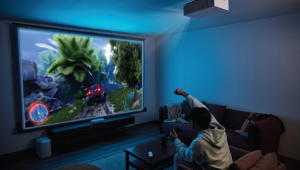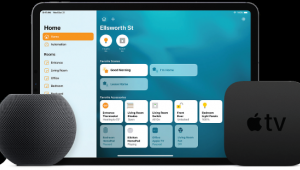11 Must-Have Tools for Your DIY Toolkit

If you’re looking to do some basic installation work — such as mounting a flat-panel TV or retrofitting new in-ceiling speakers for a Dolby Atmos setup — assembling a basic toolkit isn’t hard or expensive. Over the next couple of blogs, I’m going to dissect some basic installations you can tackle on your own. Below is a list of gear you’ll want on hand to make sure the jobs finish looking like they were done by a pro.
1. Wire Strippers/Cutters
One of the most useful tools you can have when working with wire is a good set of strippers/cutters. If you’ve ever struggled to strip/cut a wire with a bad set of strippers, you’ll appreciate just how invaluable a good set is. Every member of our company carries a medley of Klein Tools; two models worth considering are the #1010 and the #11046.
2. Cordless Drill with Various Bits
Whether it’s drilling through a top plate or screwing in a speaker, a cordless drill makes fast work of a variety of jobs. A 14-18-volt model with an extra battery is a good start. Also, pick up a 3/16-inch bell hanger bit, which is terrific for making small, probing holes that can be covered with some caulk.
3. Tape Measure
Centering a TV on the wall, finding how far off a light can to start cutting, or seeing if you can fit a new
65-inch 4K TV all require a tape measure. Better-quality tapes can handle more severe drops without breaking, have measurements printed on both sides, and have a longer stand-out (the distance you can extend it unsupported without it breaking).
4. Level
Nothing says “total rookie move” like a TV sitting crooked on the wall. I like to carry a bullet level for small things like setting in-wall speakers or wall boxes, and a longer 48-inch level for flat-panel TV mounts.
5. Drywall Jab Saw
A good drywall saw can be had for less than $10 and makes short(er) work of cutting in speakers and wall boxes.
6. Labor-Saving Devices
Some of our most frequently used tools come from a company called Labor Saving Devices Inc., and two of our favorites are the Wet Noodle magnetic in-wall retrieval system and the Creep-Zit flexible rods. The Wet Noodle is great for retrieving wiring in tight places where you can’t reach, and the Creep-Zit rods help you snake wiring down inside wall cavities.
7. Small Flashlight
Whether it’s behind a rack, in an attic, or under a house, there are many times when you’re going to be working in dark places, and the light on your phone isn’t always convenient. And, gross as this may sound, pick out a light you can hold in your mouth to keep both hands free, or invest in an adjustable LED headlamp.
8. Colored Electrical Tape and Sharpie
Great for quickly securing wiring together or for affixing an IR emitter to a component, electrical tape is cheap and useful for a range of tasks. Colored or white electrical tape is also great for writing on with a Sharpie so you can label all of your wire runs for future reference.
9. Six-in-One Screwdriver
Handy for driving an assortment of screws and nuts, this fits in your pocket — or tool belt — and makes it easy to do different tasks without having to change to a different tool.
10. Socket Set
For times when you need to drive something larger than a screw — say, a lag bolt to secure a heavy TV — you’ll need a socket set.
11. Cable Zip Ties
A home theater or home audio system is going to have a ton of wiring back at the electronics, and zip ties make the perfect means of bundling these cables together into a single, manageable trunk that will keep the back of your rack looking neat and finished.
- Log in or register to post comments



























































